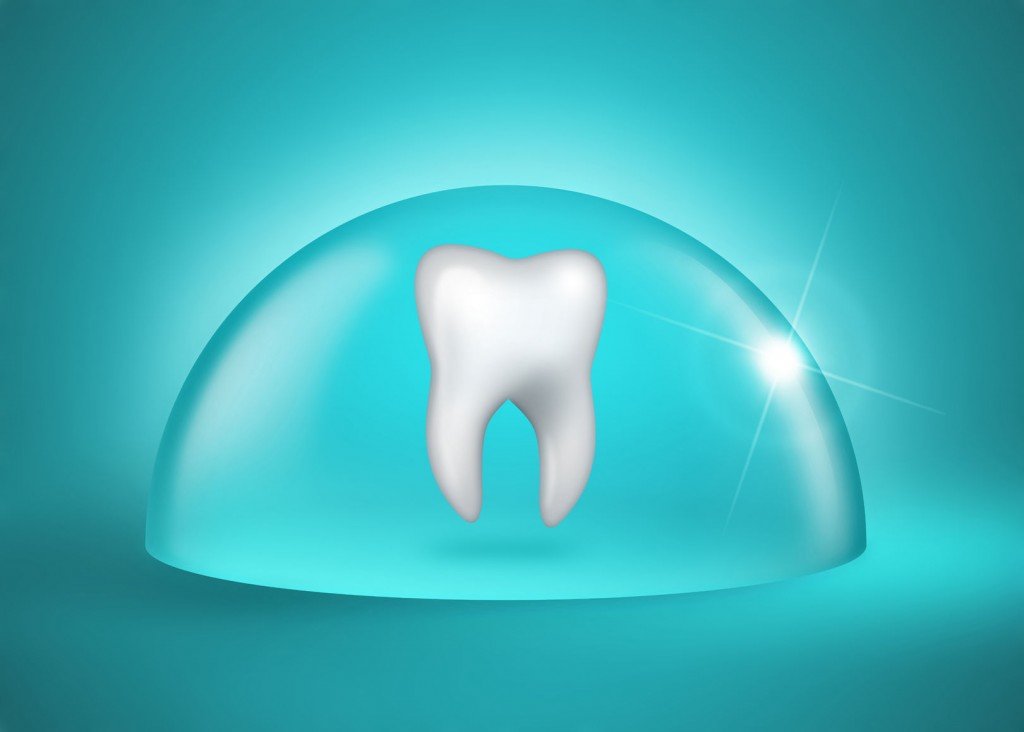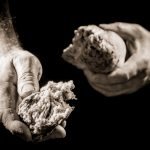Sussanna Czeranko, ND
If you are the enviable possessor of a set of good sound teeth – all your own – then perhaps you do not appreciate your wonderful possession. If you do, you are one of the minority.
Edward O. Johnson, 1919, p. 600
Since primitive man has had high immunity to dental caries, he becomes our control in the great experiment of civilization.
Weston Price, 1934, p.871
White sugar is the greatest individual destroyer of tooth-tissues, because of its total lack of vitamines [sic] and mineral salts and because of its totally lifeless, artificialized character, caused by the sulphur-bleaching process which it undergoes.
Edwin J. Ross, 1924, p. 618
Our early forebears knew the state of the teeth could be regarded as an index to the state of the entire body. Indeed, over time the dental profession has increasingly paid attention to the conclusions of the early naturopaths that dental health is inextricably linked to overall health, and most particularly to diet. It is valuable to revisit what our elders knew about dental health and to celebrate the clinical pearls they have passed on. They knew, as we know, that our pearly whites are powerful barometers of our health, and a priceless element of good health. Almost a century ago Johnstone reminded us, “You can best show your appreciation of your precious possession by learning how to take care of them. It is matter of self-preservation as well as common sense.” (Johnstone, 1919, p. 600)
Our teeth are manifestly fundamental in our lives. They certainly come in handy for the things that we love to do: talking and eating. Without exception, a beautiful smile is enhanced by white healthy teeth and not to mention, a much marketed asset in social interaction. But when we fail to care for our teeth, disaster looms ahead. As one doctor put it during the roaring twenties, “bad teeth, apart from their unsightliness, indirectly cause much illness and most agonizing pain in the form of toothache and neuralgia.” (Knaggs, 1927, p.172)
During that same period, statistics reported defective teeth amongst school children at an estimated 95% prevalence rate in the U.S. (Knaggs, 1927, p. 172) Our early naturopathic doctors knew that teeth were critical in determining overall health. Since the mouth and teeth lie at the start of the alimentary tract, they explained, the teeth have the responsibility of taking the first step in the digestive process. Kellogg, who had a deep and abiding interest in all aspects of nutrition, explained that chewing gets “the saliva flow[ing] freely, the gastric and other juices likewise begin to flow and the peristaltic waves which move the food along the food tube from one laboratory to another, start in the stomach and travel along the whole thirty feet of the alimentary canal.” (Kellogg, 1923, pp.18-19) Lust weighed in by noting, “If food is not thorough masticated it cannot be thoroughly permeated by the saliva” (Lust, 1901, p. 244) which ultimately results in poor digestion. Healthy teeth, then, were paramount in the dynamic of healthy digestion.
Kuhne reminded his colleagues at the time that “the teeth are the only bones which project from the body and are not covered with muscular tissue. He reminded his patients about the essential due diligence necessary to address the “yellowish mucus [which was] constantly being deposited on the teeth, which even takes a hard form, known as tartar.” (Kuhne, 1918, p. 363) Tartar deposited onto the teeth was seen by Kuhne and the early naturopaths as cause for grave problems, such as pyrrohea or Riggs disease. Lust’s position was, “If tartar forms on the teeth, it must be carefully removed … otherwise in time, serious disease of the gums results, and the teeth become worthless and fall out.” (Lust, 1905, p. 25)
Rigg’s Disease
Hirshberg had a particular interest in Pyrrohea Alveolaris or Rigg’s disease. He described phrrohea alveoaris as “a local infection of the gums and teeth with germs, which have a predilection and preference for tissues weakened by scratches from food particles, unsterilized bristles of poor tooth brushes or parts weakened by anemia, indoor air, darkness and health below par.” (Hirshberg, 1918, p. 622) He and others at the time did not consider Pyrrohea a unique disease, but rather the tip of the iceberg covering up many other systemic problems. Knaggs illustrated this important point of view by noting, “it is important to remember that pyrrohea is not a disease per se but just a symptom of a much more widely spread condition of septic ill health.” (Knaggs, 1927, p. 172) For those diagnosed with Rigg’s disease, that may have presented with an initial toothache, their condition was frequently accompanied by complications of “joint pains, joint deformities, joint swellings and general diseases.” (Hirshberg, 1918, p. 622)
Tooth Abscesses
The early naturopathis also had much to say in keeping with the notion of the vis about the notorious abscesses with which many of their patients presented. Clements wrote,“A tooth abscess is like any other abscess, an accumulation of pus. … When an abscess occurs in a dead tooth, it is an effort on the part of the system to dissolve the root of the tooth. To retain such a tooth is a mistake, and is a constant drain upon the vital powers of the body.” (Clements, 1926, 339) The early naturopaths knew that abscessed teeth needed to be removed to maintain good health. But having a mouth with missing teeth also meant problems.
Lust’s position was that “partial or complete toothlessness can bring on various diseases, such as throat, chest and stomach troubles” and he advised often that it was , “the duty of everyone who can afford it, to have a suitable set of artificial teeth made. Many diseases in which medicine has been powerless have been cured by following this advice.” (Lust, 1905, p.25) In any case, from this familiar perspective, untreated pyorrhea was “associated with pernicious anemia, grave gastric disorders, headaches, nausea, sick stomachs, tonsillitis, enlarged glands, joint fevers, [rheumatism], earaches, neuritis, Bright’s disease, and fatal carbuncles [severe skin abscesses].” (Hirshberg, 1918, p. 623)
The historical record shows that the causes of dental disease were much discussed and the early naturopaths saw diet as central to addressing these challenges. Brown advocated for conscious prevention, asking parents to take responsibility for their children’s dental health beginning right in the prenatal period. He wrote,“Good gums depend largely upon the kind of foods the mother eats before the child is born. From good gums come good teeth.” (Brown, 1920, p. 144) The early naturopaths also repeatedly stressed that to keep the teeth disease-free, cleaning of the gums and teeth was essential. Ross advised, “Sufferers from gum or tooth troubles should also carefully remove all material lodging in spaces between the teeth or in tooth cavities after a meal, and then eat an apple or half an apple after each meal. Other fruits are also good, but apples are best for this purpose as they contain elements which clean and protect the teeth. (Ross, 1924, p. 618)
Gum Chewing
In the interest of good dental and digestive health, habits such as chewing gum were not condoned by the early naturopaths. In those early years of the last century, a patient inquiring of his naturopath whether gum chewing was a good form of exercise to help his molars, was told, “it was neither a health habit nor beneficial to emulate the Holstein tribe.” (Johnstone, 1919, p. 601) Rather than chewing gum the way a cow would work through its cud, eating raw vegetables was the advice given to patients. Thus, as we have seen in much of the historical record of what the early nature-cure doctors recommended for many presenting conditions, dental health could be much enhanced by paying attention to the role of raw foods such as fruits and vegetables. The benefits, they felt, were multifaceted. The hardness offered to the teeth a form of exercise as opposed to “soft, mushy foods, which do not offer sufficient resistance to the teeth and so weaken the entire structure of the teeth and gums.” (Ross, p. 618)
John Harvey Kellogg and Weston Price
The early naturopaths strongly believed that food was vitally important in maintaining healthy teeth. One who saw a poor diet as the main factor for degenerative teeth was Dr Kellogg: “I wish to be clearly understood as maintaining not only that decay of the teeth is not the primary cause of indigestion but the reverse of it.” (Kellogg, 1902, p. 304) A strong voice which supported Kellogg’s convictions was Weston Price. He was a dentist in the early 20th century who did much to articulate valuable answers to questions like, ‘Why are modern teeth so bad?’ By the end of [Weston Price’s] unusual career, a career that took him on “150,000 miles of field visits all over the globe in attempt to satisfy [this] single burning question” (Johnson, 1985, p. 53), Price and his wife had done much to describe the causes of dental disease in developed societies of the time. He and his wife traveled studying the diets of isolated and non-modernized cultures. His mission was simple. Since primitive societies were relatively free from modern degenerative processes, he wanted to determine what factors were responsible for their “high immunity to dental caries and freedom from dental arch deformities”. (Price, 1936, p. 854) Price explains:
In my studies of living primitive races in various parts of the world, for comparison of groups that are still isolated with groups of that same stock that are in contact with our modernizing influence, I have found everywhere an immediate breakdown of the dental organs. The development of dental caries and change in facial and dental arch form wherever these primitives had departed from living in accordance with the tradition of their tribes by utilizing the foods of the white civilization that was encroaching upon them. Similarly, their skeletons revealed a very high incidence of physical excellence and such as would rarely be seen in our modern culture. The difference in the number of teeth attacked by caries would average approximately a 30 fold increase in the modernized groups. (Price, no date, pp 2-3)
Weston concluded that traditional diets were associated with almost complete immunity from tooth decay. These traditional “diets were unusually high in protein, vitamins, minerals and [fatty acids] with none of the empty calories [found in refined sugar products]” (Johnson, 1985, p. 55). Weston’s conclusions were also noted earlier by John Kellogg who observed, “the savage wears almost no clothing, takes no colds, knows nothing of nasal catarrh and his teeth are as sound as a dog’s.” (Kellogg, 1902, p. 304) The undeniable truth, these early nature-cure doctors concluded, was that white flour and sweet foods of the modern civilization were the culprits in dental disease.
Although the early naturopaths shared Price’s conclusions about diet, his articles did not appear in any of Benedict Lust’s naturopathic journals. One contemporary naturopath, Dr Ross, echoed Price’s teachings, condemning modernized foods found in refined carbohydrates. He stated, “Among the worst of the second class of foods are candies, pastries, jellies, jams and all foods into which white sugar enters as an ingredient. … white bread, light rye bread, refined and denatured cereals are also injurious to the teeth because they lack calcium.” (Ross, 1924, p.618) This disdain for starches was widely reiterated. Johnstone, for example, remarked, “a preponderance of starchy foods is a splendid thing to further the cause of decayed teeth.” (Johnstone, 1919, p. 601). At the same time, many naturopaths of the period loudly warned of the dangers of white sugar.
The Evils of White Sugar
The problem with the refined sugars, they taught their patients, was that they were “acid-producing. An excess of white sugar in the body steals lime from the blood that is needed to repair the teeth.” (Hanoka, 1926, p. 91) According to the early naturopaths, the ‘modern civilized diet’ was “lamentably deficient in organic lime and phosphorus.” (Knaggs, 1927, p. 172) These deficiencies “predisposed people to dyspepsia, which leads to clogging of the lymphatic glands. If the glands become clogged and unworkable, the process of digestion is greatly retarded.” (Knaggs, 172) With a faulty digestion, the creation of “organic acids, including oxalic, acetic, lactic and butyric acids are freely formed in the stomach and bowels. When absorbed by the blood they combine with its lime salts forming chiefly oxalate of line.” (Knaggs, 172) Many processed foods lost the bulk of their lime and phosphorus salts rendering the food deficient in the constituents needed to form healthy teeth.
Weston also observed that anatomical deformities such as underdeveloped jaws, irregularly spaced teeth or cracked teeth were virtually unknown among people who had not come into contact with modernized food or what we now call the “SAD” diet. Changes to the facial structure and dental arches with associated irregular teeth could occur within one generation if there were deviations from traditional dietary habits. Weston demonstrated this phenomenon in many of his studies and written materials. For example, as late as the fourth decade of the last century, he noted:
The health of the supporting tissues, as expressed in loosening of the teeth or so called pyorrhea, often changed from a very high immunity to an exceedingly low immunity in a short time after a group had made contact with modern civilization. Particularly significant has been the fact that facial and dental arch form as well as body form often changed relatively quickly after the new contact was made.(Weston, 1941, 550)
Diet impact upon dental health was well supported in clinical practice and documented in numerous publications on the subject. Another factor in dental disease was the controversial vaccinations. Whenever “people are not vaccinated their teeth are sound, but wherever the practice of vaccination has been introduced the teeth of the people deteriorate just in proportion as the population comes under the influence of vaccine.” (Bruechert, 1911, p. 423) Dr Knaggs, a distinguished and prolific author wrote a book, Why Our Teeth Decay (or Pyorrhea Unveiled). Knaggs claimed that vaccination had a “profoundly injurious effect upon the just budding permanent teeth.” (Bruechert, 1911, p. 423)
Adam’s Ale vs. Tooth Pastes
Many opinions and suspicions existed at the time about the use of tooth pastes and powders. Brown admonished his colleagues and his patients, “tooth powders like many medicines, are made to sell and not to cure. No preparation ever made will restore the teeth when once they begin to decay.” (Brown, 1920, p. 146) The prolific Lust added to this debate, saying, “it is reasonable to suppose that all largely advertised tooth pastes and mouth washes are objectionable, because we never know how and where they are made, and whether or not dangerous substances are used in their manufacture.” (Lust, 1903, p. 337)
When the tooth powders failed to meet approval, the use of water for teeth cleaning was a sure win according to early naturopaths such as Brown. “One should wash his or her teeth at night and morning, especially before retiring. Parents should see that their little ones use plenty of ‘Adam’s Ale’ [water] in their mouths after eating candy.” (Brown, 1920, p. 146) But not all had the confidence that water was enough to clean the teeth. Lust noted, “pure water alone, however, is not sufficient to cleanse the teeth, as is necessary, and to prevent formation of tartar, food remaining in the teeth cannot be removed by rinsing alone and only helps rapid decay.” (Lust, 1903, p. 337)
Lust suggested, “the very best tooth-cleaning remedy is the common garden sage, i.e. its green leaves.” (Lust, 1901, p. 244) He added, “During the cold season, when fresh sage leaves are not to be obtained, you may take sage leaves powder and finely-ground linden wood coal in equal parts, mix them well together and clean the teeth. … The chewing daily of Juniper berries is also very beneficent for the preservation of the teeth.” (Lust, 1901, p. 244) And, typical of Lust, he recommended a wide range of natural options for his patients, and as advice to his colleagues in their consultations about dental health. He wrote, “As an antiseptic the addition of powdered and clean charcoal can be recommended, but it also can be used alone. A very pleasant and suitable mouth wash is one drop of cinnamon oil in a large glass of water.” (Lust, 1905, p. 25)
The early naturopaths insisted that keeping our teeth healthy was essential for a disease free life. Their approaches often zeroed in on prevention. Informing their concerns was the worry that dental health was as affected by an approach which considered the state of the entire body, including habits, attitudes, and trusting in the body’s innate wisdom to heal itself. In this regard, in 1902, Kellogg stated, “the teeth of men and animals fed upon an insufficient, impure, or unnatural diet, undergo decay in sympathy with the deterioration of the whole organism, and often affords the first evidence of general tissue degeneration; hence the state of the teeth may be regarded as an index to the state of the entire body.” (Kellogg, 1902, p. 304)

Sussanna Czeranko, ND is a licensed naturopath in Ontario and Oregon. She is currently a faculty member in the Advancement Department at NCNM, conducting historical research in its rare books room. She is applying these studies to the creation and delivery of curriculum featuring Nature Cure, including Balneotherapy and Buteyko breathing. She is currently planning another of her annual, educational Balneotherapy and Spa trips to Eastern Europe and welcomes interested doctors to accompany her.
References
Brown, GP (1920). How to Preserve the Teeth, Herald of Health and the Naturopath, Benedict Lust Publishing, New York, Vol. XXV, #3, pp. 144-146.
Bruechert, HA (1911). Vaccination and Teeth, The Naturopath and the Herald of Health, Benedict Lust Publishing, New York, Vol. XVI, # 7, p. 423.
Clement H (1926). Tooth Abscesses: A Further Discussion, Nature’s Path, Benedict Lust Publishing, New York, Vol. II, # 7, pp. 339-340.
Hanoka, NS (1926). Keeping the Teeth Healthy, Nature’s Path, Benedict Lust Publishing, New York, Vol. II, # 2, p. 91.
Johnson, K (1985). The Pioneer who Linked Diet and Disease, East West Journal, March, 1985.
Johnstone, EO (1919). How Are Your Teeth? Herald of Health and the Naturopath, Benedict Lust Publishing, New York, Vol. XXIV, #12, pp. 600-601.
Kellogg JH (1902). The Significance of Dental Decay. The Naturopath and Herald of Health, Benedict Lust Publishing, New York, Vol. III, # 7, p. 304.
Kellogg JH (1923). The Itinerary of a Breakfast, Funk & Wagnalls Company, New York, 1923, pp. 210.
Knaggs, HV (1927). Why Our Teeth Decay? Nature’s Path, Benedict Lust Publishing, New York, Vol. III, # 4, pp. 172-173.
Kuhne, L (1918). Diseases of the Teeth, Herald of Health and the Naturopath, Benedict Lust Publishing, New York, Vol. XXII, #4, pp. 362-363.
Lust, B (1901). Care of the Teeth, The Kneipp Water Cure Monthly, Benedict Lust Publishing, New York, Vol. II, # 9, p. 244.
Lust, B (1903). How to take care of the Teeth, The Naturopath and the Herald of Health, Benedict Lust Publishing, New York, Vol. IV, # 11, p. 337.
Lust, B (1905). Hygiene of Teeth, The Naturopath and the Herald of Health, Benedict Lust Publishing, New York, Vol. VI, # 1, p. 25.
Lust, B (1905). Care of the Teeth, The Naturopath and the Herald of Health, Benedict Lust Publishing, New York, Vol. VI, # 10, p. 273.
Price, W (no date). Dentistry and Race Destiny, article found in NCNM’s Rare Book Room, pp. 2-3.
Price, W (1934). Resolved: “That a Clean Tooth does not Decay and that Mouth Cleanliness Affords the Best Known Protection Against Dental Caries, Dental Cosmos, Vol. 76, August, pp. 860-887.
Price, W (1936). New Light Obtained by a study of Primitive Races on Modern Physical Degenerations, Including Dental Caries, Dental Cosmos, Vol. 203, August, pp. 853-873.
Price, W (1941). Race Decline and Race Degeneration, The Journal of the American Dental Association, Vol.286, April, pp. 548-558.
Ross, EJ (1924). The Teeth – How to Care for Them, The Naturopath and the Herald of Health, Benedict Lust Publishing, New York, Vol. XXIX, # 7, p. 618.





